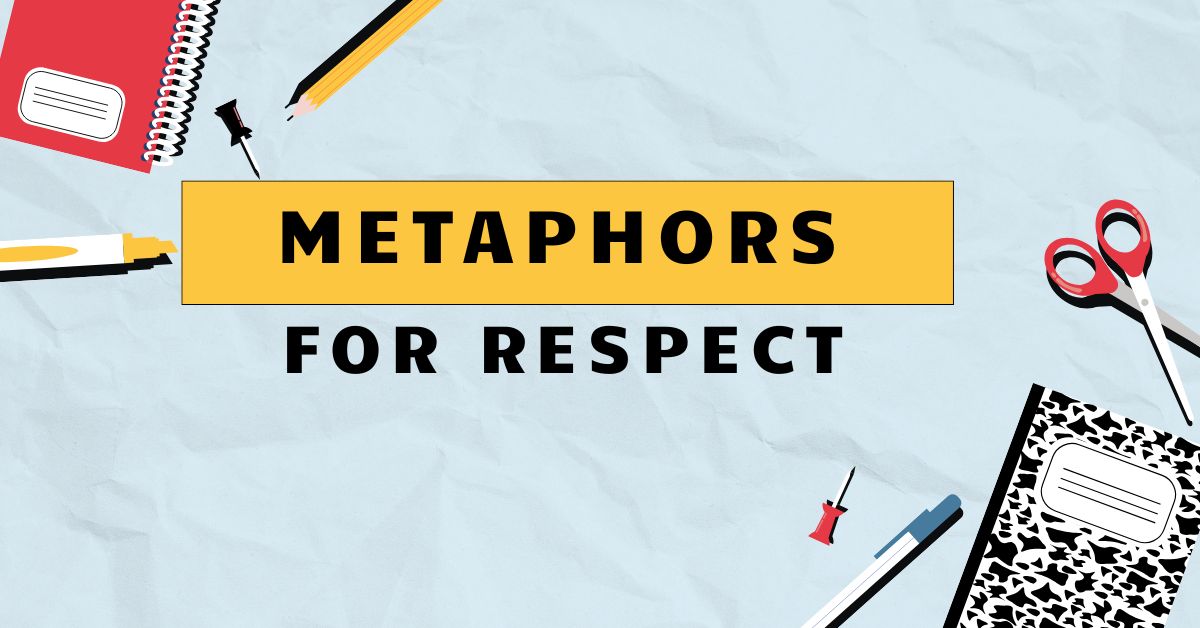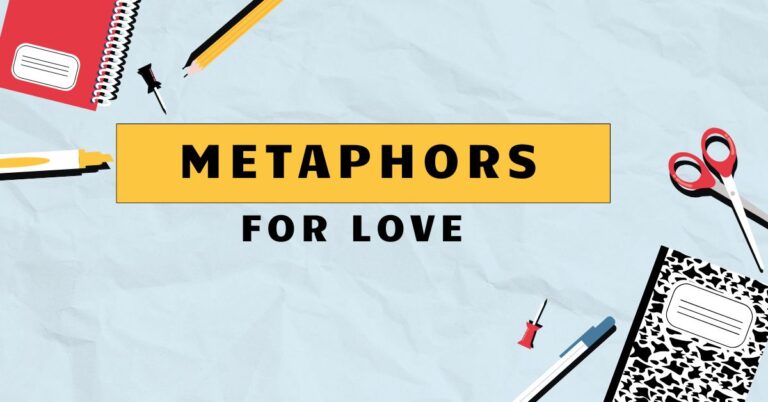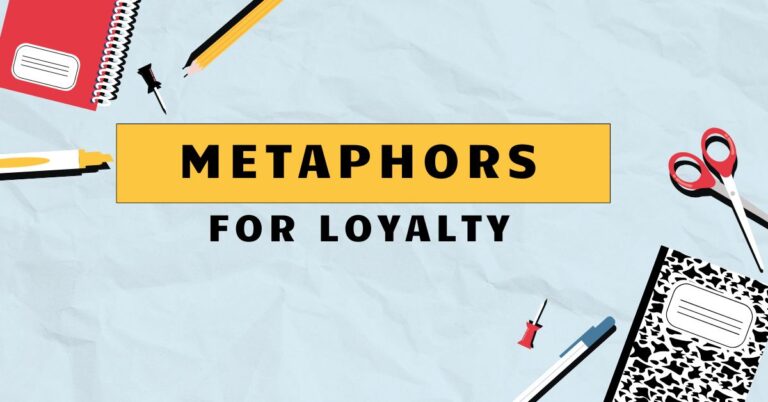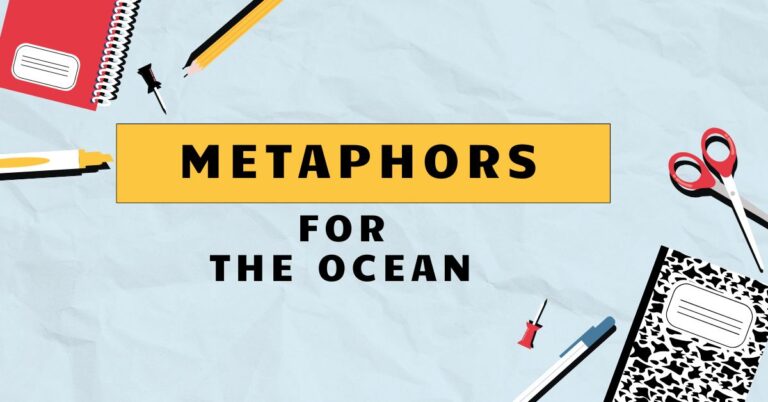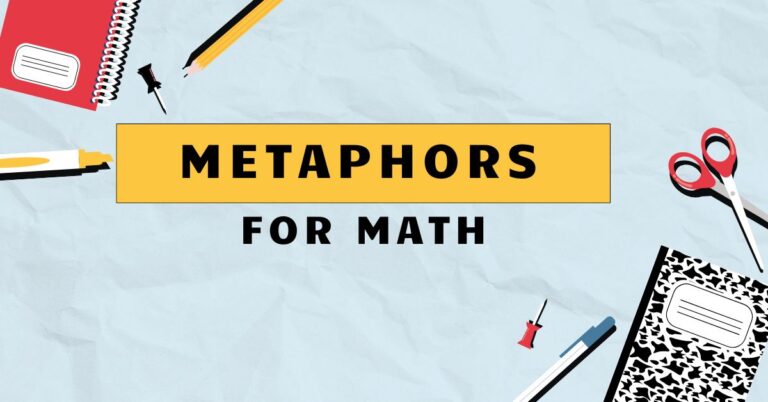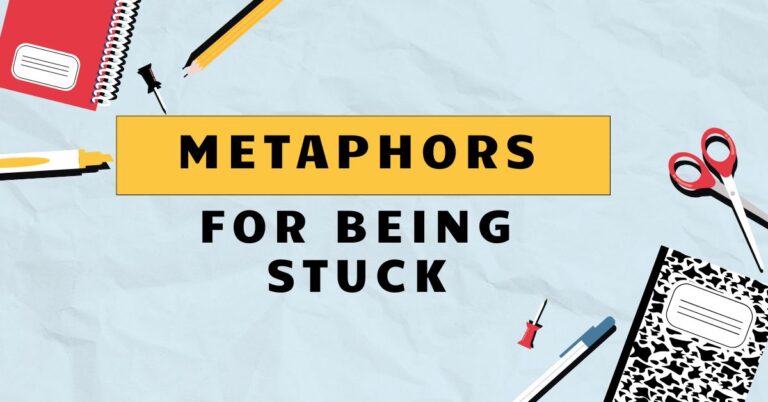39 Metaphors for Respect: Understanding Figurative Language
Understanding metaphors for respect is crucial for nuanced communication and interpreting literature. Metaphors allow us to express abstract concepts like respect in relatable and vivid terms.
This article explores the function, types, and usage of metaphors related to respect, enhancing both comprehension and expression. It’s designed for English language learners, educators, and anyone interested in enriching their understanding of figurative language.
By mastering these metaphors, you’ll gain a deeper appreciation for the subtle ways respect is conveyed in English.
Table of Contents
- Introduction
- Definition of Metaphor for Respect
- Structural Breakdown of Metaphors
- Types of Metaphors for Respect
- Examples of Metaphors for Respect
- Usage Rules for Metaphors of Respect
- Common Mistakes with Metaphors
- Practice Exercises
- Advanced Topics
- FAQ
- Conclusion
Introduction
Metaphors are fundamental to human communication, enabling us to understand abstract concepts by relating them to more concrete, familiar experiences. When discussing respect, a nuanced and often intangible quality, metaphors become particularly valuable.
They provide a way to articulate the feeling, demonstrate the act, and recognize the impact of respect in various contexts. This article delves into the world of metaphors for respect, offering a comprehensive guide to their identification, interpretation, and effective use.
By exploring various types of metaphors and providing numerous examples, this guide aims to equip you with the tools to not only understand existing metaphorical expressions of respect but also to create your own. Whether you’re a student seeking to improve your writing, a professional aiming to enhance your communication skills, or simply someone fascinated by the power of language, this exploration of metaphors for respect will prove insightful and enriching.
Understanding these metaphors allows for a deeper appreciation of the subtleties of human interaction and the importance of respectful communication.
Definition of Metaphor for Respect
A metaphor for respect is a figure of speech that describes respect by comparing it to something else, without using “like” or “as.” It suggests a similarity between two seemingly unrelated things, illuminating the qualities of respect through association. This comparison helps to make the abstract concept of respect more concrete and understandable.
In essence, a metaphor for respect operates by transferring qualities from one entity (the source domain) to the concept of respect (the target domain). For example, saying “Respect is a bridge” implies that respect connects people, facilitates understanding, and allows for the passage of ideas or emotions.
The metaphor highlights the connecting and facilitating aspects of respect.
Metaphors for respect can function in various contexts, including:
- Personal relationships: To describe how individuals treat each other.
- Professional settings: To illustrate the importance of respect in the workplace.
- Societal discourse: To discuss respect as a value within a community or culture.
- Literature and art: To convey themes of respect or its absence in creative works.
Structural Breakdown of Metaphors
The structure of a metaphor involves two primary components: thetenorand thevehicle. The tenor is the subject to which metaphorical attributes are ascribed (in this case, respect).
The vehicle is the object or concept whose attributes are being transferred to the tenor. Understanding this structure is essential for both interpreting and creating effective metaphors.
For example, in the metaphor “Respect is a foundation,” the tenor is “respect,” and the vehicle is “foundation.” The metaphor works by suggesting that respect, like a foundation, provides stability, support, and a strong base for something else (e.g., a relationship, a community, or a project). The qualities of the vehicle (foundation) are attributed to the tenor (respect).
Effective metaphors rely on a clear and meaningful connection between the tenor and the vehicle. The stronger the connection, the more impactful and insightful the metaphor will be.
Additionally, metaphors often operate within a specific context, which can influence their interpretation. It’s important to consider the context when analyzing or using metaphors to ensure that the intended meaning is conveyed accurately.
Types of Metaphors for Respect
Metaphors for respect can be categorized into several types, each with its own characteristics and effects. Understanding these types can help you to identify and use metaphors more effectively.
Direct Metaphors
Direct metaphors explicitly state the comparison between respect and another object or concept. They are often simple and straightforward, making the connection clear and immediate.
For example, “Respect is a gift” directly equates respect with the act of giving, highlighting its value and the intention behind it.
Implied Metaphors
Implied metaphors suggest the comparison without explicitly stating it. They require the reader or listener to infer the connection between respect and the metaphorical object.
For example, “He watered her self-esteem” implies that his actions were nurturing and supportive, fostering her self-worth, which is a form of respect. The metaphor is embedded within the action of “watering,” which is associated with growth and care.
Extended Metaphors
Extended metaphors sustain the comparison over a longer passage, developing the metaphorical relationship in more detail. They allow for a more complex and nuanced exploration of respect.
For example, one could develop the metaphor “Respect is a journey” by describing the path, the challenges, the rewards, and the destinations that are reached through respectful interactions. This type of metaphor provides a richer and more immersive understanding of the concept.
Conceptual Metaphors
Conceptual metaphors are underlying systems of thought that shape how we understand abstract concepts. They are often unconscious and pervasive in our language.
For example, the conceptual metaphor “RESPECT IS UP” is reflected in phrases like “look up to someone,” “high regard,” and “elevated status.” This metaphor suggests that respect is associated with elevation and superiority, while disrespect is associated with being “down” or “low.”
Examples of Metaphors for Respect
Below are several examples of metaphors for respect, categorized to illustrate their diverse applications and forms. These examples provide a practical understanding of how metaphors can be used to convey the meaning and significance of respect in various contexts.
Table 1: Direct Metaphors for Respect
This table provides examples of direct metaphors, where respect is explicitly compared to another concept. Each example highlights a different facet of respect through its direct association with a tangible or understandable idea.
| Metaphor | Explanation |
|---|---|
| Respect is a bridge. | Respect connects people and allows communication. |
| Respect is a foundation. | Respect provides stability and support for relationships. |
| Respect is a mirror. | Respect reflects how we value others and ourselves. |
| Respect is a shield. | Respect protects individuals from harm and negativity. |
| Respect is a seed. | Respect, when planted, grows into strong relationships. |
| Respect is a lighthouse. | Respect guides us toward positive interactions. |
| Respect is a currency. | Respect is valuable and can be exchanged in social interactions. |
| Respect is a language. | Respect communicates value and understanding. |
| Respect is a dance. | Respect involves coordination and reciprocal movement. |
| Respect is a garden. | Respect requires cultivation and care to flourish. |
| Respect is a contract. | Respect implies a mutual agreement to treat each other well. |
| Respect is a compass. | Respect guides us to act with integrity. |
| Respect is a gift. | Respect is something valuable we can offer to others. |
| Respect is a key. | Respect unlocks understanding and positive relationships. |
| Respect is a ladder. | Respect helps us rise above prejudices and misunderstandings. |
| Respect is a circle. | Respect creates a sense of community and belonging. |
| Respect is a melody. | Respect creates harmony in our interactions. |
| Respect is a canvas. | Respect allows us to paint a picture of positive relationships. |
| Respect is a magnet. | Respect attracts positive interactions and goodwill. |
| Respect is a cornerstone. | Respect is essential for building strong communities. |
| Respect is a shield. | Respect protects individuals from harm and negativity. |
| Respect is a compass. | Respect guides us to act with integrity. |
| Respect is a gift. | Respect is something valuable we can offer to others. |
| Respect is a key. | Respect unlocks understanding and positive relationships. |
Table 2: Implied Metaphors for Respect
This table showcases implied metaphors for respect, where the comparison is not directly stated but suggested through actions, descriptions, or situations. These metaphors require a deeper level of interpretation to understand the underlying message about respect.
| Metaphorical Phrase | Explanation |
|---|---|
| He listened with open ears. | Implies he was attentive and respectful to the speaker. |
| She paved the way for his success. | Implies she supported him and showed respect for his potential. |
| They lifted her voice. | Implies they amplified her opinions, showing respect for her views. |
| He shielded her from criticism. | Implies he protected her reputation and showed respect for her dignity. |
| She nurtured his confidence. | Implies she fostered his self-esteem, showing respect for his abilities. |
| They built a platform for her ideas. | Implies they provided a space for her to share her thoughts, showing respect for her intellect. |
| He illuminated her contributions. | Implies he highlighted her efforts, showing respect for her work. |
| She watered his dreams. | Implies she supported his aspirations, showing respect for his goals. |
| They honored her silence. | Implies they respected her need for privacy and reflection. |
| He elevated her position. | Implies he promoted her, showing respect for her capabilities. |
| She amplified his message. | Implies she helped him spread his ideas, showing respect for his perspective. |
| They fortified their bond. | Implies they strengthened their relationship through mutual respect. |
| He fostered her growth. | Implies he supported her personal and professional development, showing respect for her potential. |
| She mirrored his kindness. | Implies she reciprocated his respectful behavior. |
| They cultivated a culture of understanding. | Implies they created an environment where respect and empathy flourished. |
| He navigated their differences with care. | Implies he approached disagreements respectfully. |
| She bridged the gap between them. | Implies she facilitated understanding and respect between differing viewpoints. |
| They honored his legacy. | Implies they showed respect for his accomplishments and contributions. |
| He carried her with dignity. | Implies he supported her through a difficult time with respect and compassion. |
| She echoed his sentiments. | Implies she agreed with his respectful viewpoints. |
| They cleared the path for her advancement. | Implies they removed obstacles to her success, showing respect for her ambition. |
| He shed light on her accomplishments. | Implies he brought attention to her achievements, showing respect for her hard work. |
| She planted seeds of collaboration. | Implies she fostered teamwork and mutual respect for each other’s ideas. |
| They built bridges of understanding. | Implies they worked to overcome differences and foster mutual respect. |
Table 3: Extended Metaphors for Respect
This table provides examples of extended metaphors, where the comparison is developed over several phrases or sentences. These metaphors allow for a more in-depth exploration of the multifaceted nature of respect.
| Metaphor | Explanation |
|---|---|
| Respect is a garden; it needs constant tending. You must water it with kindness, prune it of prejudice, and fertilize it with understanding. Only then will it bloom into a beautiful landscape of harmonious relationships. | This metaphor extends the comparison of respect to a garden, emphasizing the ongoing effort required to nurture and maintain respectful relationships. |
| Respect is a journey, not a destination. Each step forward requires empathy, each obstacle demands patience, and each interaction shapes the path. The ultimate reward is not a final arrival but a continuous experience of mutual understanding and appreciation. | This metaphor frames respect as a continuous process, highlighting the challenges and rewards along the way. |
| Respect is a building; its foundation is trust, its walls are communication, and its roof is understanding. Without a strong foundation, the building will crumble. Without open communication, the walls will weaken. And without mutual understanding, the roof will collapse. | This metaphor uses the analogy of a building to illustrate the essential components of respect and the consequences of neglecting them. |
| Respect is a dance; each partner must listen to the music, feel the rhythm, and move in harmony. If one partner dominates or ignores the other, the dance becomes awkward and disjointed. Only through mutual awareness and coordination can the dance become a beautiful expression of connection. | This metaphor compares respect to a dance, emphasizing the need for reciprocal action and mutual awareness. |
| Respect is a language; it has its own vocabulary of kindness, its own grammar of empathy, and its own syntax of understanding. To speak it fluently, one must listen carefully, observe thoughtfully, and respond compassionately. Only then can meaningful conversations and genuine connections be formed. | This metaphor equates respect to a language, highlighting the skills and practices required to communicate respectfully. |
| Respect is a bridge; it spans the gaps of misunderstanding, connects the shores of differing opinions, and allows for the passage of empathy. To build a strong bridge, one must use the materials of patience, the tools of communication, and the blueprint of understanding. | This metaphor develops the image of a bridge to illustrate how respect overcomes barriers and facilitates connection. |
| Respect is a mirror; it reflects the values we hold, the attitudes we project, and the behaviors we exhibit. If we want to see respect reflected back to us, we must first embody it in our own actions. The clearer the reflection, the stronger the relationships we build. | This metaphor uses the image of a mirror to emphasize the importance of embodying respect in our own actions. |
| Respect is a shield; it protects us from the arrows of prejudice, the stones of judgment, and the storms of negativity. To wield it effectively, we must stand firm in our values, defend the dignity of others, and create a safe space for open communication. | This metaphor uses the image of a shield to illustrate how respect protects individuals and fosters a positive environment. |
Table 4: Conceptual Metaphors for Respect
Conceptual metaphors are fundamental frameworks that shape how we think about abstract concepts. This table explores how the concept of respect is often structured through underlying metaphorical systems.
| Conceptual Metaphor | Examples | Explanation |
|---|---|---|
| RESPECT IS UP | Look up to someone, high regard, elevated status, hold in high esteem | Respect is associated with elevation and superiority. |
| RESPECT IS ATTENTION | Give someone your attention, pay attention to their needs, listen carefully | Respect is shown through attentiveness and focus. |
| RESPECT IS PROTECTION | Shield someone from criticism, defend their reputation, stand up for them | Respect is demonstrated by protecting someone from harm or negativity. |
| RESPECT IS VALUE | Treat someone like gold, cherish their contributions, appreciate their worth | Respect is expressed by recognizing and valuing someone’s worth. |
| RESPECT IS UNDERSTANDING | See things from their perspective, put yourself in their shoes, empathize with their feelings | Respect involves understanding and acknowledging someone’s viewpoint. |
| RESPECT IS A GIFT | Offer your respect, give them credit, show appreciation | Respect is something valuable that can be given to others. |
Usage Rules for Metaphors of Respect
When using metaphors for respect, it’s important to follow certain guidelines to ensure clarity, appropriateness, and effectiveness. These rules help to avoid misinterpretations and enhance the impact of your metaphorical expressions.
1. Clarity:The metaphor should be easily understandable.
Avoid obscure or overly complex comparisons that may confuse the audience. The connection between the tenor (respect) and the vehicle (the object or concept being compared to) should be clear and logical.
2. Appropriateness:The metaphor should be suitable for the context and audience.
Consider the tone, formality, and cultural background of the situation. A metaphor that is effective in one context may be inappropriate in another.
3. Originality:While common metaphors can be effective, try to create original metaphors that offer fresh insights into the concept of respect.
Overused metaphors can become clichés and lose their impact.
4. Consistency:If using an extended metaphor, maintain consistency throughout the passage.
Avoid introducing contradictory or unrelated elements that may disrupt the metaphorical relationship.
5. Relevance:The metaphor should be relevant to the specific aspect of respect you are trying to convey.
Choose a vehicle that accurately reflects the qualities or characteristics you want to highlight.
6. Avoid Mixed Metaphors:Do not combine two or more incompatible metaphors in the same expression.
This can create confusion and undermine the intended meaning. For example, “Respect is a bridge that needs to be nipped in the bud” mixes the metaphor of respect as a bridge with the idiom of “nipping something in the bud,” creating a nonsensical image.
Common Mistakes with Metaphors
Several common mistakes can undermine the effectiveness of metaphors. Being aware of these pitfalls can help you to avoid them and use metaphors more skillfully.
1. Clichés:Using overused or predictable metaphors can make your writing or speech sound unoriginal and uninspired.
Instead of saying “Respect is a two-way street,” try to come up with a more creative and insightful comparison.
2. Mixed Metaphors:Combining incompatible metaphors can create confusion and undermine the intended meaning.
For example, “He navigated the sea of opportunity while building a strong foundation” mixes the metaphor of navigating the sea with the metaphor of building a foundation, creating a nonsensical image.
3. Unclear Comparisons:Using metaphors that are too abstract or obscure can make it difficult for the audience to understand the connection between the tenor and the vehicle.
Ensure that the comparison is clear and logical.
4. Inappropriate Tone:Using metaphors that are too informal or humorous in a serious context can undermine the message and damage your credibility.
Choose metaphors that are appropriate for the tone and formality of the situation.
5. Overuse:Using too many metaphors in a short space can overwhelm the audience and detract from the overall message.
Use metaphors sparingly and strategically for maximum impact.
Table 5: Correct vs. Incorrect Metaphor Usage
| Category | Incorrect | Correct | Explanation |
|---|---|---|---|
| Cliché | Respect is a two-way street. | Respect is a mutual exchange of understanding. | Avoid overused phrases. |
| Mixed Metaphor | He climbed the ladder of success while swimming in a sea of opportunity. | He climbed the ladder of success with determination. | Avoid combining incompatible images. |
| Unclear Comparison | Respect is a quantum entanglement. | Respect is an invisible thread connecting hearts. | Ensure the comparison is understandable. |
| Inappropriate Tone | Respect is like, totally awesome, dude! | Respect is a virtue to be admired and cultivated. | Match the tone to the context. |
Practice Exercises
These exercises are designed to help you practice identifying, interpreting, and creating metaphors for respect. Each exercise focuses on a different aspect of metaphorical usage, allowing you to develop your skills in a structured and progressive manner.
Exercise 1: Identifying Metaphors
Identify the metaphors for respect in the following sentences. Explain what each metaphor suggests about respect.
Table 6: Practice Exercise 1 – Identifying Metaphors
| Question | Answer |
|---|---|
| 1. Respect is the cornerstone of any healthy relationship. | Respect is a cornerstone: It suggests that respect is essential and foundational for a relationship. |
| 2. He watered her self-esteem with kind words. | Watered her self-esteem: It suggests that his words nurtured and fostered her self-worth. |
| 3. Respect is a shield against prejudice. | Respect is a shield: It suggests that respect protects individuals from harmful biases. |
| 4. She paved the way for his success with her support. | Paved the way: It suggests that she removed obstacles and facilitated his advancement. |
| 5. Respect is a language that everyone understands. | Respect is a language: It suggest that respect communicates value and understanding across different cultures. |
| 6. The company culture cultivated a garden of mutual respect. | Garden of mutual respect: It suggests that the company environment fostered growth and nurturing of respectful interactions. |
| 7. He built bridges of understanding with his diplomatic approach. | Built bridges: It suggests that he connected differing viewpoints and fostered mutual understanding. |
| 8. Respect is a compass that guides our actions. | Respect is a compass: It suggests that respect provides direction and helps us act with integrity. |
| 9. She honored his silence, understanding his need for reflection. | Honored his silence: It suggests that she respected his need for privacy and quiet contemplation. |
| 10. They elevated her voice, ensuring her opinions were heard. | Elevated her voice: It suggests that they amplified her opinions and gave her a platform to speak. |
Exercise 2: Completing Metaphors
Complete the following metaphors for respect by choosing the most appropriate vehicle from the options provided.
Table 7: Practice Exercise 2 – Completing Metaphors
| Question | Options | Answer |
|---|---|---|
| 1. Respect is like a __________, connecting people across divides. | (a) wall (b) bridge (c) barrier | (b) bridge |
| 2. Treating others with respect is like planting a __________ of kindness. | (a) weed (b) tree (c) seed | (c) seed |
| 3. A lack of respect can erode a relationship like __________. | (a) sunshine (b) rain (c) acid | (c) acid |
| 4. Respect is the __________ upon which trust is built. | (a) sand (b) foundation (c) sky | (b) foundation |
| 5. Earning someone’s respect is like receiving a __________ medal. | (a) participation (b) bronze (c) gold | (c) gold |
| 6. Practicing mutual respect is like conducting an __________ orchestra. | (a) out-of-tune (b) harmonious (c) chaotic | (b) harmonious |
| 7. Respect is a __________ that protects us from negativity. | (a) magnet (b) shield (c) mirror | (b) shield |
| 8. Showing respect to elders is like honoring a __________ of wisdom. | (a) fountain (b) desert (c) puddle | (a) fountain |
| 9. Respectful communication is like a __________ that guides us through conflict. | (a) storm (b) lighthouse (c) fog | (b) lighthouse |
| 10. Cultivating respect in the workplace is like creating a __________ of collaboration. | (a) desert (b) garden (c) wasteland | (b) garden |
Exercise 3: Creating Metaphors
Create your own metaphors for respect based on the following prompts. Explain what each metaphor suggests about respect.
Table 8: Practice Exercise 3 – Creating Metaphors
| Prompt | Your Metaphor | Explanation |
|---|---|---|
| 1. Describe respect in the context of a classroom. | Respect in a classroom is a shared learning space. | It suggests that students and teachers treat the space and each other with care and consideration to allow for optimal learning. |
| 2. Describe respect in the context of a friendship. | Respect in a friendship is a strong, flexible vine. | It suggests that it allows the relationship to grow and bend without breaking. |
| 3. Describe respect in the context of a workplace. | Respect in a workplace is a well-oiled machine. | It suggests that everyone working together efficiently and harmoniously allows for optimal productivity. |
| 4. Describe respect in the context of family. | Respect in a family is a warm, comforting quilt. | It suggests that it provides security, love, and protection for everyone. |
| 5. Describe respect in the context of society. | Respect in society is a vibrant tapestry. | It suggests that it is composed of diverse threads that come together to create a beautiful whole. |
| 6. Describe respect in the context of leadership. | Respect in leadership is a steady hand guiding a ship. | It suggests that it provides direction and stability, ensuring the team moves forward. |
| 7. Describe respect in the context of communication. | Respect in communication is a clear, open channel. | It suggests that it allows for the free flow of ideas and understanding. |
| 8. Describe respect in the context of conflict resolution. | Respect in conflict resolution is a calming balm. | It suggests that it soothes tensions and allows for constructive dialogue. |
| 9. Describe respect in the context of personal growth. | Respect in personal growth is a strong, supportive root. | It suggests that it provides stability and nourishment for self-improvement. |
| 10. Describe respect in the context of cultural exchange. | Respect in cultural exchange is a window into another world. | It suggests that it allows for understanding and appreciation of different perspectives. |
Advanced Topics
For advanced learners, exploring the philosophical and cultural dimensions of metaphors for respect can provide a deeper understanding of their significance. Here are some advanced topics to consider:
1. Cultural Variations:Investigate how metaphors for respect vary across different cultures and languages.
Consider how cultural values and beliefs shape the metaphorical expressions of respect. For example, some cultures may emphasize hierarchical respect, while others may prioritize egalitarian respect.
2. Historical Evolution:Trace the historical evolution of metaphors for respect.
Explore how these metaphors have changed over time and how they reflect evolving social norms and values. Consider how historical events and movements have influenced the way respect is conceptualized and expressed.
3. Cognitive Linguistics:Delve into the field of cognitive linguistics to understand the cognitive processes underlying metaphorical thought.
Explore how conceptual metaphors shape our understanding of abstract concepts like respect and how these metaphors are grounded in our embodied experiences.
4. Ethical Implications:Consider the ethical implications of using metaphors for respect.
Explore how metaphors can be used to promote or undermine respectful behavior. Consider how metaphors can be used to justify discrimination or inequality.
5. Literary Analysis:Analyze how metaphors for respect are used in literature to convey themes of respect, dignity, and social justice.
Explore how authors use metaphors to create powerful and evocative images of respect and disrespect.
FAQ
This section addresses frequently asked questions about metaphors for respect, providing clear and concise answers to common queries.
1. What is the difference between a metaphor and a simile?
A metaphor directly compares two unlike things without using “like” or “as,” while a simile uses “like” or “as” to make the comparison. For example, “Respect is a bridge” is a metaphor, while “Respect is like a bridge” is a simile.
2. How can I improve my ability to identify metaphors?
Practice reading widely and paying attention to figurative language. Look for comparisons that are not literal and ask yourself what qualities are being transferred from one object or concept to another.
Understanding common metaphorical patterns can also help.
3. How can I create more original and effective metaphors?
Brainstorm a wide range of possible comparisons and choose the ones that are most insightful and evocative. Consider the specific qualities of respect you want to highlight and choose vehicles that accurately reflect those qualities.
Experiment with different types of metaphors, such as implied metaphors and extended metaphors.
4. Are some metaphors for respect more appropriate than others?
Yes, the appropriateness of a metaphor depends on the context, audience, and purpose. Consider the tone, formality, and cultural background of the situation.
Avoid metaphors that are offensive, insensitive, or likely to be misunderstood.
5. Can metaphors for respect be used in all forms of communication?
Yes, metaphors for respect can be used in various forms of communication, including writing, speaking, and visual media. However, it’s important to use them judiciously and ensure that they are appropriate for the medium and audience.
6. How do conceptual metaphors influence our understanding of respect?
Conceptual metaphors shape our understanding of abstract concepts by providing underlying frameworks for thought. For example, the conceptual metaphor “RESPECT IS UP” suggests that respect is associated with elevation and superiority, while the conceptual metaphor “RESPECT IS A GIFT” suggests that respect is something valuable that can be given to others.
7. What are some common cultural differences in metaphors for respect?
Metaphors for respect can vary significantly across cultures. Some cultures may emphasize hierarchical respect, while others may prioritize egalitarian respect.
For example, in some cultures, respect for elders may be expressed through metaphors of reverence and deference, while in other cultures, respect may be expressed through metaphors of equality and mutual understanding.
8. How can I avoid using clichés when creating metaphors for respect?
Be mindful of overused phrases and try to come up with fresh and original comparisons. Brainstorm a wide range of possible vehicles and choose the ones that are most unexpected and insightful.
Experiment with different ways of expressing the metaphorical relationship.
9. How do metaphors contribute to building respectful relationships?
Metaphors can contribute to building respectful relationships by fostering empathy
and understanding. They provide a way to articulate the value and significance of respect, making it more tangible and relatable.
By using metaphors, we can communicate our respect for others in a more meaningful and impactful way.
10. What role does context play in interpreting metaphors for respect?
Context is crucial for interpreting metaphors for respect. The meaning of a metaphor can vary depending on the social, cultural, and historical context in which it is used.
It’s important to consider the specific circumstances and the intended audience when interpreting metaphors to ensure that you understand the intended message.
Conclusion
Metaphors for respect are powerful tools for communicating the value, significance, and nuances of respect in various contexts. By understanding the structure, types, and usage rules of these metaphors, you can enhance your ability to express and interpret respectful communication.
Avoiding common mistakes and practicing regularly will further refine your skills in using metaphors effectively.
As we have explored, metaphors not only enrich our language but also deepen our understanding of abstract concepts like respect. They allow us to see respect in new and imaginative ways, fostering empathy, promoting positive relationships, and contributing to a more respectful society.
Whether you are a student, educator, professional, or simply someone interested in the power of language, mastering metaphors for respect will undoubtedly enhance your communication skills and broaden your perspective.

